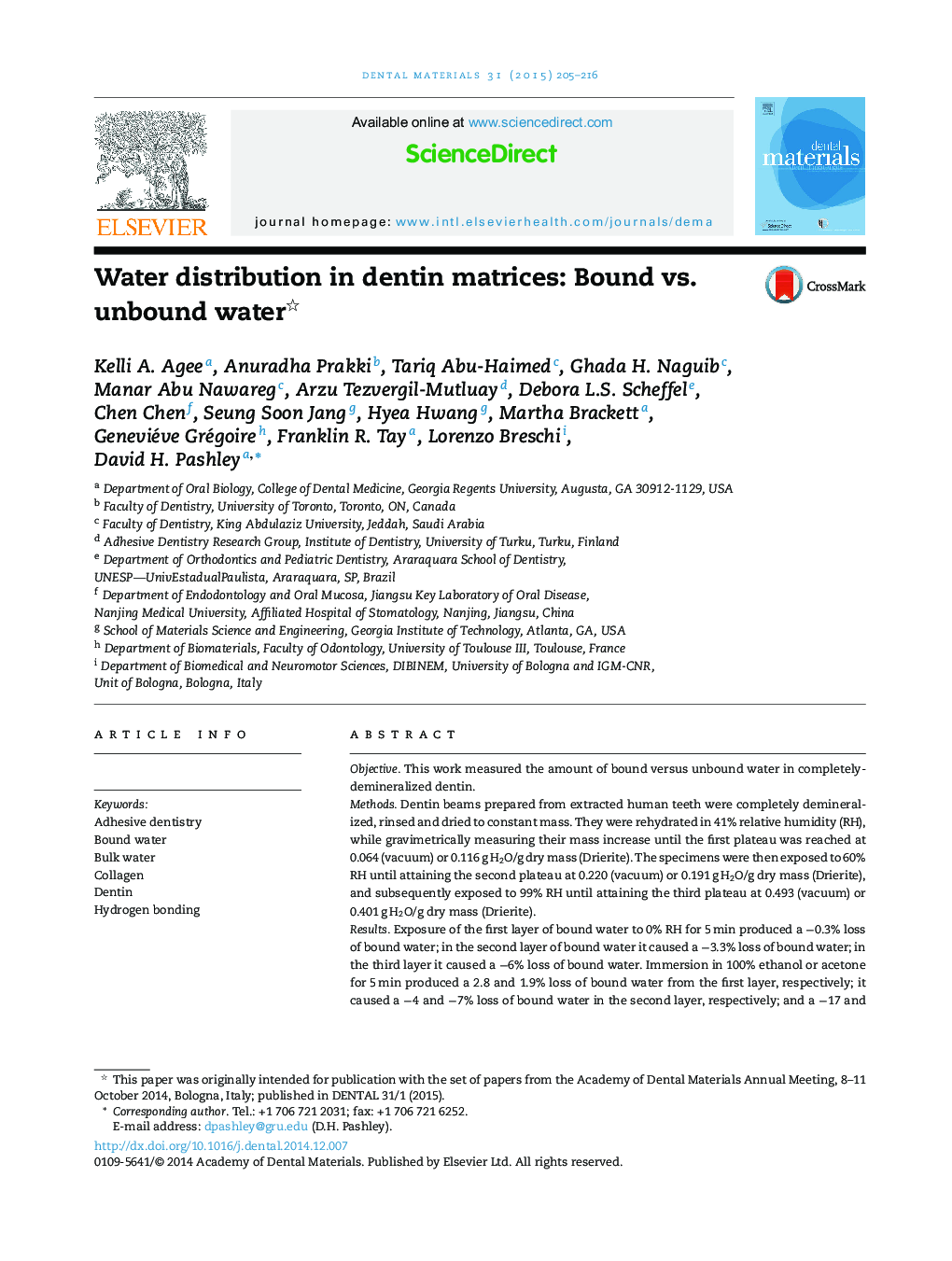| Article ID | Journal | Published Year | Pages | File Type |
|---|---|---|---|---|
| 1420796 | Dental Materials | 2015 | 12 Pages |
ObjectiveThis work measured the amount of bound versus unbound water in completely-demineralized dentin.MethodsDentin beams prepared from extracted human teeth were completely demineralized, rinsed and dried to constant mass. They were rehydrated in 41% relative humidity (RH), while gravimetrically measuring their mass increase until the first plateau was reached at 0.064 (vacuum) or 0.116 g H2O/g dry mass (Drierite). The specimens were then exposed to 60% RH until attaining the second plateau at 0.220 (vacuum) or 0.191 g H2O/g dry mass (Drierite), and subsequently exposed to 99% RH until attaining the third plateau at 0.493 (vacuum) or 0.401 g H2O/g dry mass (Drierite).ResultsExposure of the first layer of bound water to 0% RH for 5 min produced a −0.3% loss of bound water; in the second layer of bound water it caused a −3.3% loss of bound water; in the third layer it caused a −6% loss of bound water. Immersion in 100% ethanol or acetone for 5 min produced a 2.8 and 1.9% loss of bound water from the first layer, respectively; it caused a −4 and −7% loss of bound water in the second layer, respectively; and a −17 and −23% loss of bound water in the third layer. Bound water represented 21–25% of total dentin water. Chemical dehydration of water-saturated dentin with ethanol/acetone for 1 min only removed between 25 and 35% of unbound water, respectively.SignificanceAttempts to remove bound water by evaporation were not very successful. Chemical dehydration with 100% acetone was more successful than 100% ethanol especially the third layer of bound water. Since unbound water represents between 75 and 79% of total matrix water, the more such water can be removed, the more resin can be infiltrated.
